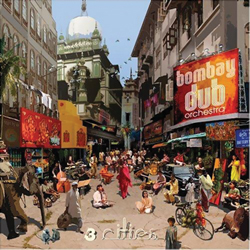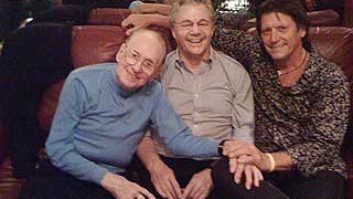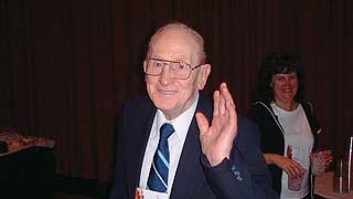
Mastering Tales From the Front Lines
Coinciding with Mix‘s December focus on mastering, we asked readers to tell us about their most memorable mastering projects.
One of my most interesting mastering projects has been the Bombay Dub Orchestra’s second release, 3 Cities (Six Degrees Records, 2008). This album has more than 75 virtuoso artists participating. The musical numbers combine electronic (dance) sensibility and synthesized melody and rhythm instruments with extraordinarily recorded string orchestra, Indian classical instruments and voices. With a dynamic range from “very quiet” to “ultra-loud,” with wide-ranging sonic depth (from “in your face” to “very distant”), it was a challenge to master this classy roller-coaster adventure and unify the pieces each at just the right level. Listening to one track after another is like getting a free high. I try to play a piece from this album for every client who comes into the studio; [they] inevitably sit there mesmerized by the jaw-dropping experience.
Bob Katz
More on Mastering
One of the largest projects to come through our door was Willie Nelson’s One Hell of a Ride (Sony/Columbia/Legacy). A four-CD, career-spanning box set, it includes recordings from 1954 to 2008 (100 songs total). Our studio was crammed with dozens of cartons of master tapes of varying formats. Just about every tape had been well-taken-care of. That being said, our tape oven ran nonstop through the mastering process. Tape formats included ¼-inch, 15 ips, full-track mono; ¼-inch, 15 ips, 2-track NNR; ¼-inch, 15 ips, 2-track Dolby A; ¼-inch, 15 ips, 2-track dbx; ½-inch, 2-track, 15 and 30 ips; Sony DASH; and, of course, the ubiquitous WAV file.
The big challenge was to establish sonic continuity on music that spanned 54 years! A lot of that was accomplished using our hybrid A/D mastering chain. That chain includes an in-house-designed analog transfer section, SPL PQ mastering EQ, Pacific Microsonics A/D conversion, Weiss EQ1-LP and DS1-MKII. The project was literally “one hell of a ride,” but a thrilling and exciting one at that.
Joe Palmaccio
The Place…For Mastering
Nashville
I’d have to say my most recent interesting mastering project would have to be the Stickman project for bass player extraordinaire Tony Levin. It was the first Chapman Stick project that I mastered and the fact that it happened to come from one of the most phenomenal Stick players on the Planet just made it all the more pleasurable to work on. What really made the project unique for me is that the Stick happens to be an instrument I’m very familiar with since I’ve been a player for the past 24 years.
Larry DeVivo
Silvertone Mastering
Saratoga Springs, N.Y.
Currently, my favorite LP project is Alicia Keys’ As I Am. Alicia and Ann Mincieli [Keys’ recording engineer/album coordinator] came up with the delightfully insane idea of moving my entire mastering suite out to her studio. I often try to come out of my comfort zone and do something that’s never been done before, so into her live room I moved. I brought it all: my big speakers, console, chairs and even my artwork.
Between two grand pianos and all of my stuff, the room filled up quickly, yet was still comfortable to work in. There were so many unforeseen benefits to doing this:
- The album never leaked. We mixed and mastered inside one building and had total control of who got copies of what songs and when.
- [We had] the time and freedom to try anything.
- Input: Everyone sounded off on each other’s work. If there were changes to be made, they could be done within an hour for everyone to hear.
We mixed and mastered simultaneously for a good three to four weeks, with most days running until 3 a.m. It truly was an old-school approach to making a modern LP.
At any given time, Manny Marroquin would be mixing upstairs in the mix room, Ann would be cutting new vocal or piano parts with Alicia in another room, while I was mastering downstairs in the live room. Some nights we would all be working on the same song at once.
I relied mostly on my near-field monitors (Focal Solo 6s). I used three gobos to narrow the stereo field and reduce reflections from the sidewalls, and that solved all the problems I was hearing. I also had two other studios and multiple cars in the driveway to listen in, as well. Some evenings we would jump into Ann’s Range Rover with a reference CD, take a long drive and listen to the whole album. Manny would make mix notes as I made mastering notes on each song. We’d return to the studio around 11 p.m. and make our changes until 3 or 4 a.m.
Every song was mastered from both 1-inch tape (Ampex ATR, 15 ips, Aria Electronics) and a digital file via Pro Tools.
Overall, what truly made this one of my favorite albums to work on was the environment at the studio. In addition to being incredibly talented pros, Alicia, Kerry, Ann, Manny and the entire staff at Oven Studio are simply really good people. This made the rigors of doing something so out-of-the-box flow so smoothly.
David Kutch
[TALBACK QUESTION]
Mix‘s January issue will focus on live sound. We’d like to hear from live engineers — tell us about your wildest gig. E-mail us at [email protected].
Mix‘s February issue will focus on portable production. What was the craziest place you’ve recorded? E-mail us at [email protected].






